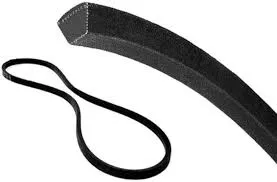- Arabic
- French
- Russian
- Spanish
- Portuguese
- Turkish
- Armenian
- English
- Albanian
- Amharic
- Azerbaijani
- Basque
- Belarusian
- Bengali
- Bosnian
- Bulgarian
- Catalan
- Cebuano
- Corsican
- Croatian
- Czech
- Danish
- Dutch
- Afrikaans
- Esperanto
- Estonian
- Finnish
- Frisian
- Galician
- Georgian
- German
- Greek
- Gujarati
- Haitian Creole
- hausa
- hawaiian
- Hebrew
- Hindi
- Miao
- Hungarian
- Icelandic
- igbo
- Indonesian
- irish
- Italian
- Japanese
- Javanese
- Kannada
- kazakh
- Khmer
- Rwandese
- Korean
- Kurdish
- Kyrgyz
- Lao
- Latin
- Latvian
- Lithuanian
- Luxembourgish
- Macedonian
- Malgashi
- Malay
- Malayalam
- Maltese
- Maori
- Marathi
- Mongolian
- Myanmar
- Nepali
- Norwegian
- Norwegian
- Occitan
- Pashto
- Persian
- Polish
- Punjabi
- Romanian
- Samoan
- Scottish Gaelic
- Serbian
- Sesotho
- Shona
- Sindhi
- Sinhala
- Slovak
- Slovenian
- Somali
- Sundanese
- Swahili
- Swedish
- Tagalog
- Tajik
- Tamil
- Tatar
- Telugu
- Thai
- Turkmen
- Ukrainian
- Urdu
- Uighur
- Uzbek
- Vietnamese
- Welsh
- Bantu
- Yiddish
- Yoruba
- Zulu
Aug . 15, 2024 12:28 Back to list
Comprehensive Guide to V-Belt Standard Sizes and Their Applications for Various Machinery
Understanding V-Belt Standard Size Chart
V-belts are crucial components in various mechanical systems, serving the essential function of transmitting power between rotating shafts. They are widely used in machinery and vehicles due to their efficient design and ability to provide reliable performance. To ensure the effective use of V-belts, it is important to understand the standard size chart associated with them. This article will explore the significance of V-belt size charts, the standard sizes available, and how to effectively select the correct belt for your needs.
Why Size Matters
Sizing is critical when it comes to V-belts. An improperly sized belt can lead to a number of problems, such as slipping, overheating, and premature wear, all of which can compromise the efficiency of the system. A V-belt works by engaging with the pulleys on the powered equipment, and if the fit is not correct, it can lead to inefficient power transmission. Therefore, using a standard size chart is essential for selecting the right belt.
Standard Sizes of V-Belts
V-belts come in various sizes and dimensions, categorized primarily based on their cross-sectional shape and length. The most common profiles include the A, B, C, D, and E series belts, with each differing in width and height.
- A Series Typically 1/2 inch wide with a height of 3/8 inch, suitable for light-duty applications. - B Series 5/8 inch wide and 7/16 inch high, used for medium-duty tasks. - C Series 3/4 inch wide and 1/2 inch high, ideal for heavier loads. - D Series 1 inch wide by 5/8 inch high, often utilized in industrial machinery. - E Series 1.2 inches wide, providing even greater load capacity.
Each series has its designated length range, usually expressed in inches, which can be found in the standard size chart
. It is worth noting that belts are often measured by their inside circumference, which directly affects their compatibility with pulleys.v belt standard size chart

How to Read a V-Belt Size Chart
Reading a V-belt size chart is straightforward once you understand the dimensions. The columns typically include
1. Belt Profile This indicates the series (A, B, C, etc.). 2. Width The width of the belt in inches. 3. Height The cross-sectional height in inches. 4. Length The effective length or inner circumference, again measured in inches.
When looking for a replacement belt, you should match these specifications with the belt currently in use. If you can’t find the exact measurement, it is advisable to round to the nearest standard size, bearing in mind that slightly different dimensions might affect belt performance.
Best Practices for Selecting V-Belts
1. Identify Your Requirements Understand the demands of your application, including load size and operational speed. 2. Measure Correctly Accurately measure existing belts or pulleys to ensure you choose the right size. 3. Refer to the Size Chart Use the standard size chart to cross-reference your measurements and identify possible replacements. 4. Consider Material and Construction Different materials (rubber, polyurethane, etc.) and constructions (narrow, cogged, etc.) can also affect performance and should be considered.
Conclusion
V-belt standard size charts are invaluable tools for anyone involved in mechanical systems design, maintenance, or repair. By understanding the standard sizes and how to read the charts, users can confidently select the correct V-belt for their applications. Proper selection not only ensures optimal performance but also extends the lifespan of both the belt and the machinery involved. Whether for light-duty or heavy industrial use, knowing how to navigate the V-belt size chart is a foundational skill for successful operational management.
-
Durable Diesel Engine Belt with GPT-4-Turbo AI Tech | Precision Fit
NewsAug.04,2025
-
High-Quality Tensioner Belt Pulley - Durable & Efficient
NewsAug.03,2025
-
Premium Timing Belt Factory | AI-Optimized Solutions
NewsAug.02,2025
-
Premium Custom V Belts Enhanced with GPT-4 Turbo AI
NewsAug.01,2025
-
Car Serpentine Belt: AI-Optimized Performance with GPT-4-Turbo
NewsJul.31,2025
-
Heat Joining Drive Belt | High-Durability Fusion Solution
NewsJul.31,2025

